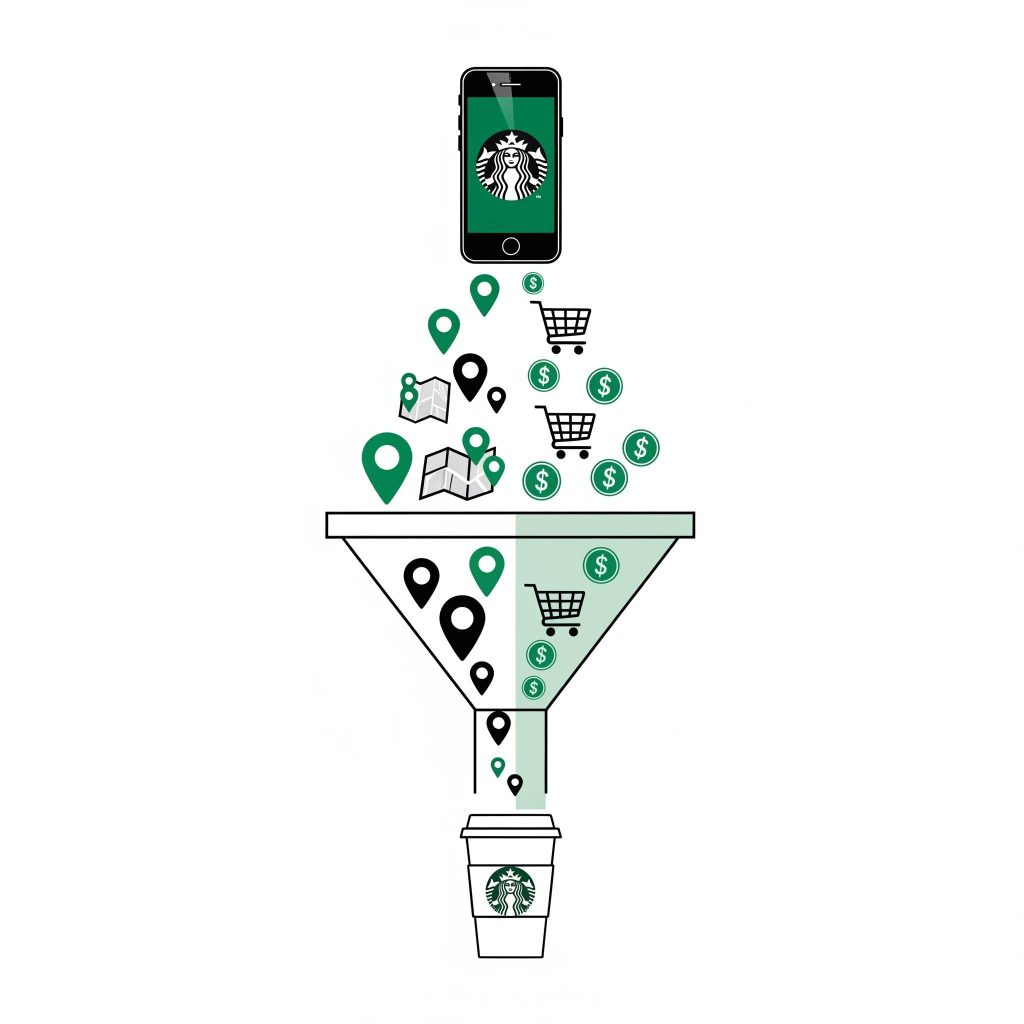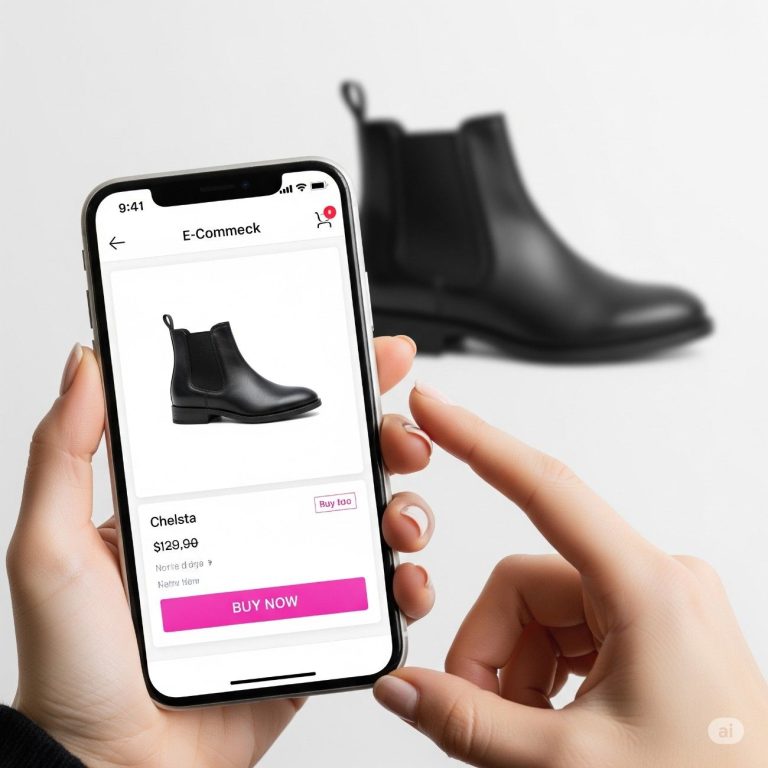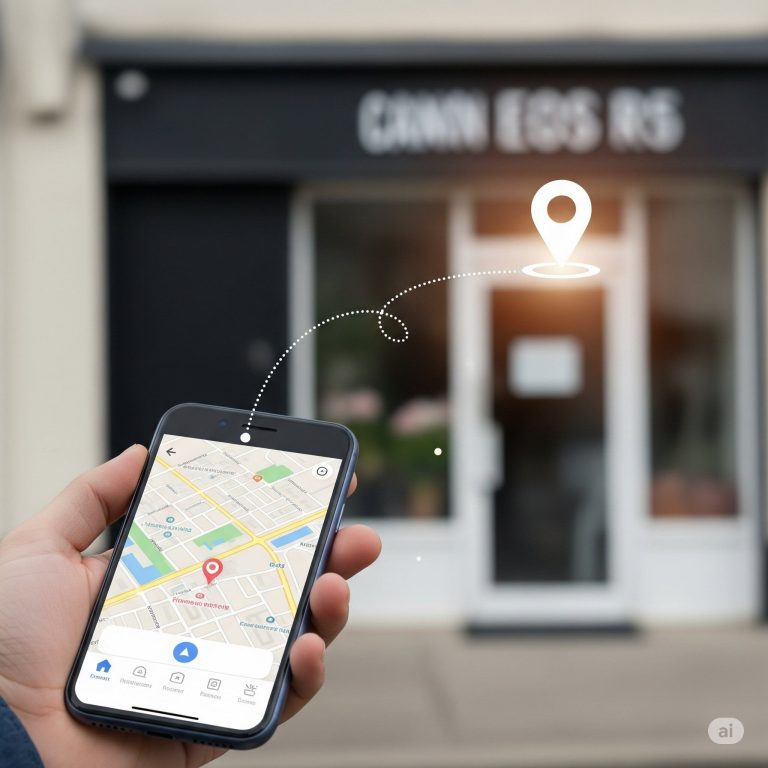Imagine this.
A customer unlocks their phone, searches “coffee near me,” and within seconds they have store options, menu previews, and even estimated wait times.
Brands that can identify, capture, and act on that fleeting intent will win. On the other hand, brands that can’t will be ignored.
Starbucks has built an empire by mastering these “micro-moments” — those brief, intent-driven interactions where consumers, smartphones in hand, want to know, go, do, or buy right now. It’s not simply the coffee quality or store ambiance that powers their dominance. It’s their ability to merge two critical moments — “I-want-to-go” and “I-want-to-buy” — into a seamless, single step.
Nearly 90% of consumers begin a mobile search without a specific brand in mind. Starbucks doesn’t wait for that intent to appear; they manufacture it. Through its mobile app, loyalty program, and AI-driven personalization, Starbucks ensures that when coffee crosses your mind, the brand is already there with an easy, enticing way to act on it.
At the center of this strategy is the Starbucks Digital Flywheel — an ecosystem that integrates rewards, personalization, payment, and ordering in a way that creates a self-reinforcing loop of engagement, data, and sales.
Deconstructing Micro-Moments: The ‘Go’ and ‘Buy’ Impulses
To fully appreciate Starbucks’ dominance, it’s important to understand the two foundational micro-moments they target. While they may seem distinct, Starbucks has designed its experience so that these moments blur into one continuous stream of action.
The ‘I-Want-to-Go’ Moment
This is the moment of immediacy, location, and context. The consumer’s goal is simple: find a store nearby that fits their needs right now. This often happens through “near me” searches or in-app location lookups. Starbucks addresses this with:
- Accurate, up-to-date store hours to prevent wasted trips.
- Detailed amenities filters, allowing customers to choose based on drive-thru availability, Wi-Fi access, or mobile order readiness.
- Integrated maps with turn-by-turn directions.
Their store locator is not just a utility. It is an active part of the sales funnel. Whether accessed through the app or their Progressive Web App, the experience is fast, clear, and loaded with the right information to keep the customer within Starbucks’ ecosystem from discovery to purchase.
The ‘I-Want-to-Buy’ Moment
Here the consumer is ready to act. They want speed, simplicity, and certainty. Starbucks delivers this with:
- An intuitive mobile ordering interface.
- Multiple payment options including stored value and mobile wallets.
- Personalized promotions that nudge customers toward action.
Any friction at this stage can derail a sale. Starbucks minimizes that risk by making the path from intent to payment nearly instantaneous.
The Starbucks Digital Flywheel
The Starbucks app is the company’s most powerful competitive asset — not because it has a store locator, ordering function, or payment option, but because it integrates them into a single, data-driven experience. This is the Digital Flywheel: four pillars working together to create loyalty, efficiency, and sales.
| Pillar | Role in the Flywheel |
|---|---|
| Rewards | Gamified loyalty program with “Stars” driving repeat visits and valuable first-party data |
| Personalization | AI-powered (“Deep Brew”) offers and recommendations tailored to each customer |
| Payment | Stored value and mobile wallets removing transaction friction |
| Order | Mobile Order & Pay turning intent into purchase in seconds |
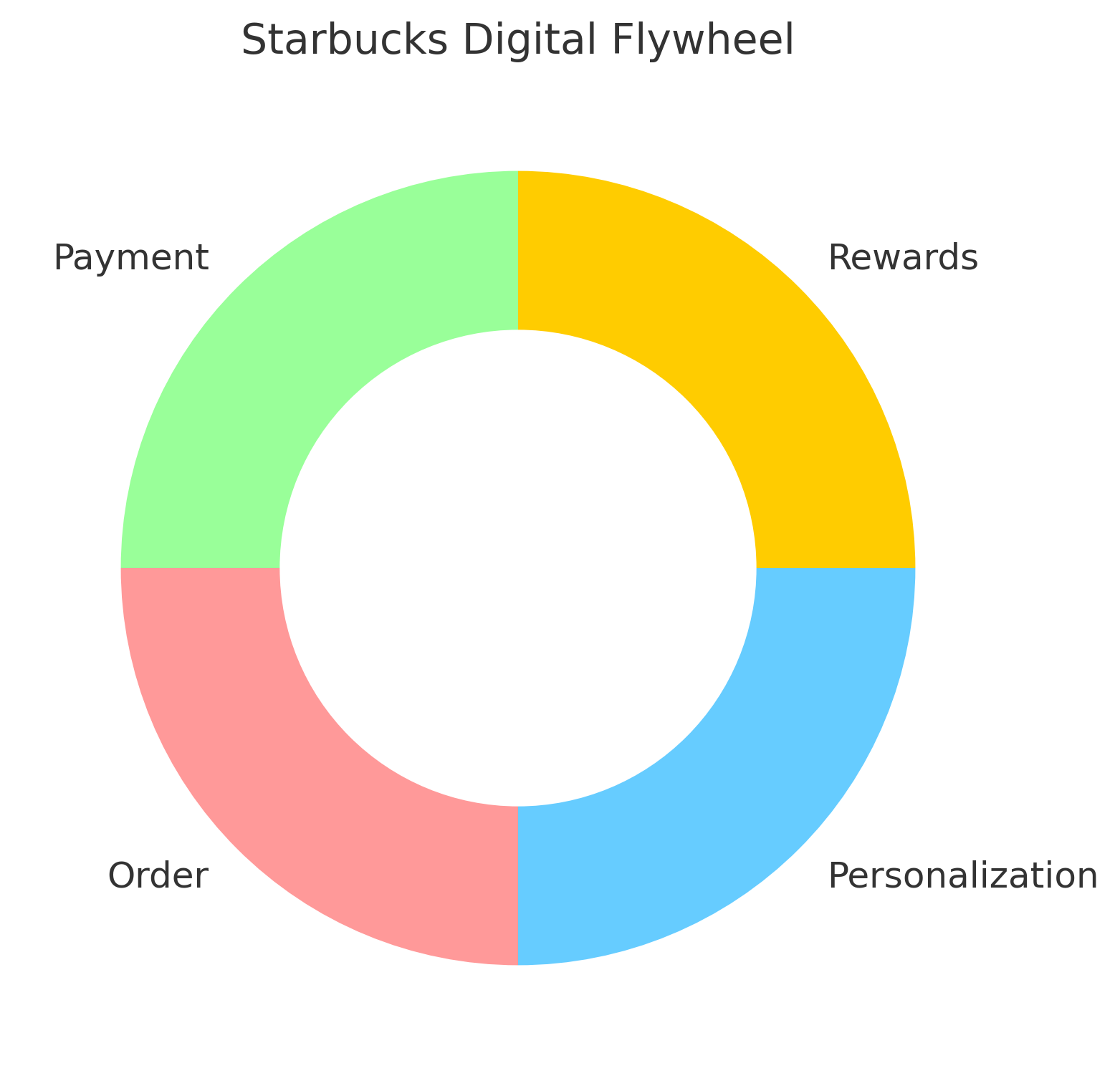
Competitors can replicate individual features, but the magic lies in the integration and feedback loop. Each purchase fuels data collection, which improves personalization, which drives more orders, creating a self-sustaining cycle.
From ‘Go’ to ‘Buy’: The Seamless Customer Journey
Here’s how a typical Starbucks micro-moment unfolds:
- Impulse: The customer thinks about coffee and opens the Starbucks app — often out of habit.
- Go Intent: A map of nearby stores appears instantly, complete with details and filters.
- Fusion: Selecting a store transitions directly into ordering from that location, with the menu reflecting real-time availability.
- Buy Intent: The customer picks a saved favorite or customizes their drink. The app highlights their Rewards progress, adding incentive.
- Payment: With stored value or a mobile wallet, checkout is a single tap.
- Fulfillment: The app provides a pickup time and notifies when the order is ready.
Every tap is intentional, every screen moves the customer closer to purchase without distraction or dead ends.
Quantifying the Payoff
The results of this fusion strategy are undeniable:
- 31% of U.S. store transactions now come from Mobile Order & Pay, up from 25% two years ago.
- Rewards members generate 57–60% of U.S. revenue.
- Starbucks has over 75 million global loyalty members, 34.3 million of whom are active in the U.S.
- Rewards members spend three times more per visit and come more often.
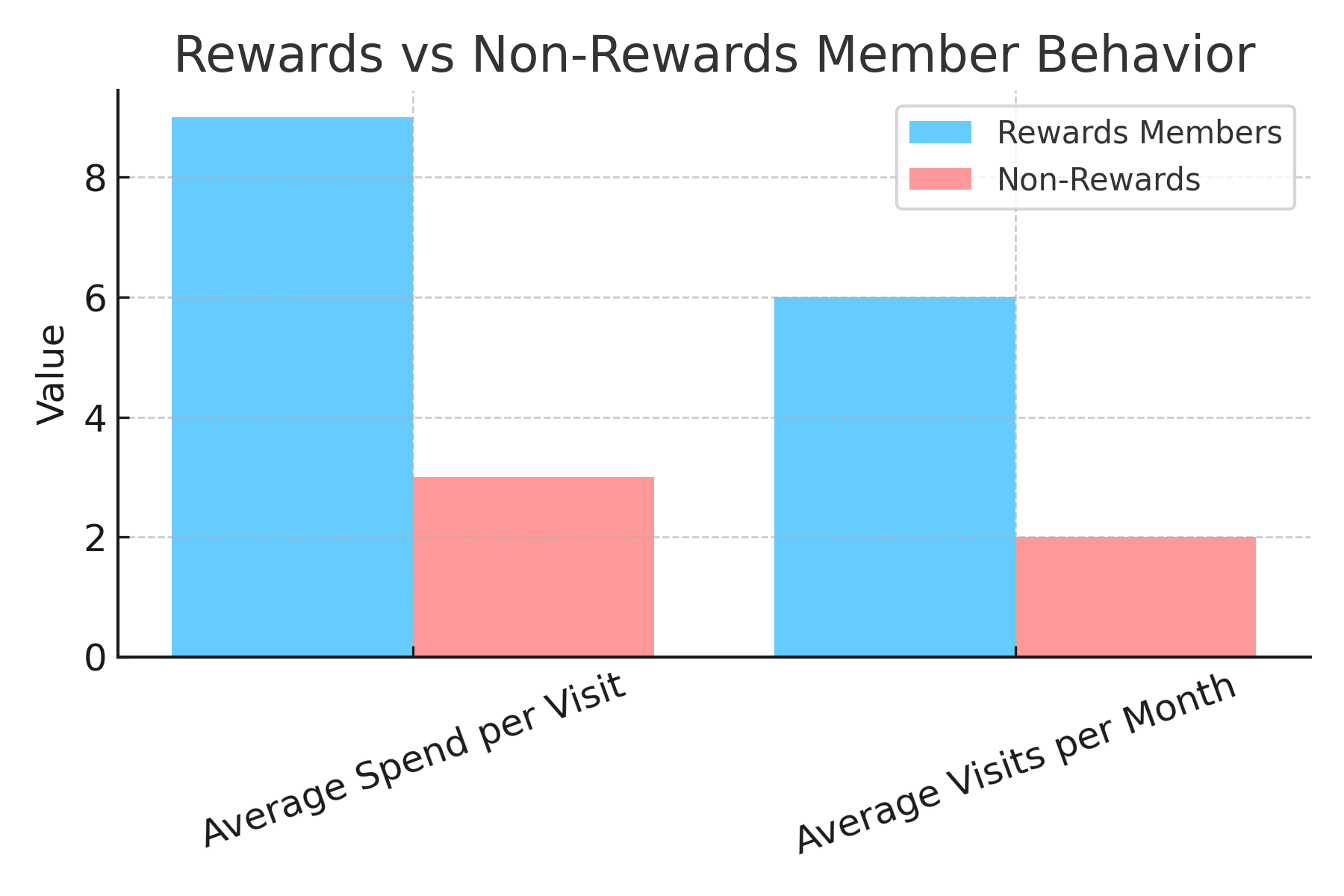
These aren’t just numbers; they represent market insulation. A customer deeply embedded in the Rewards ecosystem, with preloaded funds and a familiar ordering routine, is far less likely to defect to a competitor.
The Unseen Costs of Digital Convenience
Yet, the same system driving Starbucks’ growth also creates operational challenges.
Virtual bottlenecks occur when mobile orders flood the system, causing delays that sometimes exceed 40 minutes. Many stores were never designed to handle simultaneous in-store, drive-thru, delivery, and pickup orders. The result: crowded pickup counters, stressed staff, and customer frustration.
There’s also a human cost. Baristas face higher workloads and less personal interaction with customers. Former CEO Howard Schultz lamented the loss of the “third place” — the warm, community space between home and work. When the app becomes the main customer interface, human connection suffers.
The Road Ahead: Intelligent Convenience
Starbucks isn’t retreating from its digital-first approach. Instead, it’s investing in AI and operational redesign.
The “Triple Shot Reinvention” strategy aims to double Rewards membership to 150 million, modernize its tech stack, and expand new store formats like pickup-only and advanced drive-thrus.
Deep Brew AI will enhance personalization even further, delivering tailored suggestions not just in-app but on drive-thru screens. On the operational side, Starbucks is deploying order sequencing software to balance workloads and AI assistants to help baristas work more efficiently.
The goal is to marry personalization with operational stability — convenience without chaos.
Lessons for Other Brands
- Build an ecosystem, not just an app. Integration creates stickiness.
- Identify and remove your customers’ biggest friction points.
- Use data to shape habits, not just track activity.
- Anticipate operational challenges before they happen.
Set the Standard to Boost Your Sales
Starbucks has set the benchmark for capturing and converting micro-moments, collapsing “go” and “buy” into one fluid motion. The payoff has been massive, but the journey is not without risks. Digital efficiency can erode the human connections that build lasting loyalty.
The brands that will thrive in the next decade will not only master convenience; they’ll preserve the human touch that makes customers feel valued. Starbucks’ challenge — and opportunity — is to achieve both.

